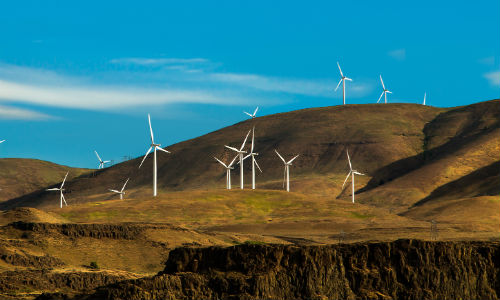Growth in the renewable energy field has been crazy. In fact, 40-years-ahead-of-U.S.-Energy-Information-Administration’s-predictions crazy.
You could just say that the EIA needs to fix its forecasting methodology, and you wouldn’t be wrong. But many in the renewable energy field still believe that growth is exceeding expectations.
All that exciting growth may be beginning to slow, though. The EIA predicts (yes, those guys again) that renewable energy generation will grow by 11 percent in 2017 and then stay stagnant in 2018. Even if you exclude hydropower, which has largely been responsible for the booming numbers, the pace of growth is still slowing.
Factors leading to a renewables slowdown
There is a mix of factors playing into this that can be interpreted as either good or bad for the industry’s future.
The expiration of federal tax credits is looming. However, Congress could extend the credits as it has once before. Companies may ramp up new production to meet that deadline but construction may fall off once it’s in place.
As you’ve heard, the U.S. pulled out of the Paris Agreement, but some states are still holding to their commitments. Investments in renewable energy have been falling globally but that’s mainly because of lower profits, due to how cheap renewables have become.
And while coal’s decline has been beneficial for renewable energy companies, President Trump has vowed to bring the industry back. Then again, is that even possible?
5 story ideas on renewables
All of this is to say that there’s a lot going on in the industry right now, which means there are a lot of stories for you to cover. Here are five local stories linked to the sector’s growth:
1. Is construction of renewable energy slowing or picking up in your state? Companies may be less inclined to build with ending tax credits and a lack of national pressure to meet carbon demands. But then again, they may be ramping up to fit in construction under the wire. Or a state may be applying its own pressure.
2. How much of your state’s carbon emissions have been cut by renewable energy sources? Is it enough to meet your state’s goals or the Paris Agreement goals, if they were still in place?
3. Who is leading investment in renewable energy in your state? Why is that entity so hungry for renewable energy? Is it because the sector has gained traction among investors? Was it spurred by tax credits? Will another entity take its place now that the driving factors in the industry may be shifting?
4. Advancements in technology have made it significantly less costly to build renewable energy sources. Does your state have a company that makes these parts? How is that company doing? Has it seen growth in recent years?
5. As renewable energy sources slowly make up more and more of the nation’s energy grid, the cost of electricity has been dropping. Real term costs dropped 2 percent between 2015 and 2016, while consumers allocated less than 4 percent of their household spending to energy, according to Time. What do the energy bills in your state look like? Have they been shrinking, too, or are they bucking the national trend?











